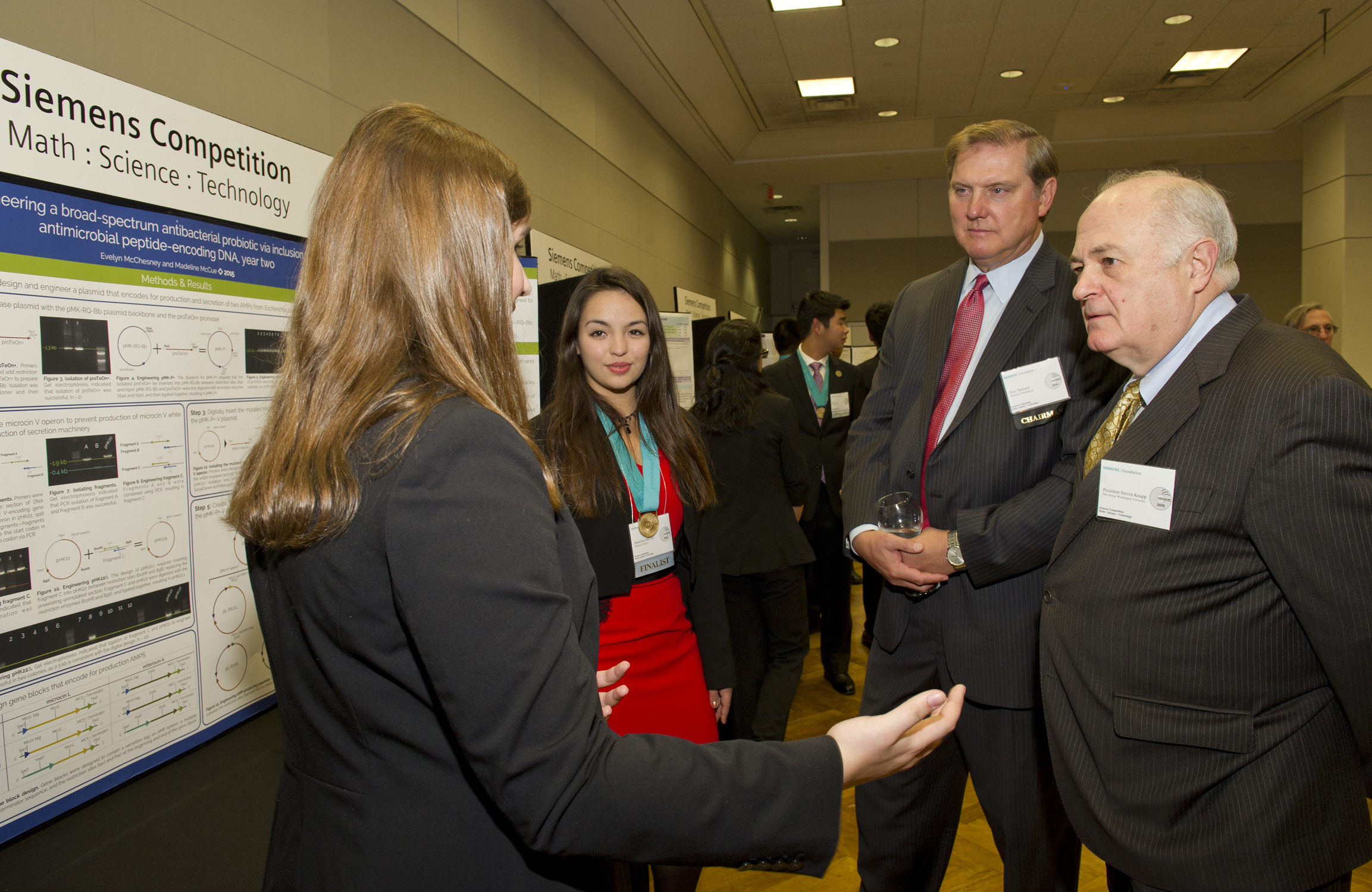By Ruth Steinhardt
The future of science, technology, engineering and mathematics (STEM) came to Foggy Bottom Tuesday as the George Washington University hosted the finals of the 16th annual Siemens Competition.
High school students from the United States and 14 other countries submitted more than 1,700 research projects to the competition, vying for a total of $500,000 in scholarships.
The 20 finalists came to GW this weekend to present their research to their peers and to a panel of expert judges led by Columbian College of Arts and Sciences Associate Dean for Research and Strategic Initiatives Yongwu Rong. GW’s Office of Summer and Special Programs also invited District of Columbia high school students to meet the finalists and participate in demonstrations and tours on Sunday.
At the final ceremony, contestants heard from veteran innovative thinkers such as Siemens Foundation CEO Dave Etzwile, the NASA Goddard Space Flight Center’s Aprille Ericsson, GW Provost Steven Lerman and MikMak founder Rachel Tipograph.
GW Today gathered a few of the finalists’ and presenters’ ideas from the front lines of innovation:
Clean up oil spills
Major spills like the Refugio disaster off the coast of California in May have brought haunting images of oil-drenched wildlife to public consciousness. Kimberly Te and Christine Yoo, both seniors at Manhasset Senior High School in Manhasset, N.Y., have engineered steps toward a solution. Their invention, made of natural, sustainable materials, cleans up oil-polluted areas and uses that otherwise unusable oil to generate clean energy to power remote sensors. Ms. Te and Ms. Yoo took home first prize in the team category and split a $100,000 scholarship.
Purify drinking water
Sulfamethazine, the most commonly used veterinary antibiotic, can contaminate surface and groundwater, entering the human food chain and causing ecosystem damage. Maria Elena Grimmett, a senior at Oxbridge Academy of the Palm Beaches in West Palm Beach, Fla., devised a way to use small plastic beads to remove it, using delivery systems already in place to treat drinking water. Ms. Grimmett received first place in the individual category and a $100,000 scholarship for her work.
Measure glucose with contact lenses
Speaker Loren Hudziak, a solutions architect at Google, amped up the audience with stories behind some of the tech giant’s innovations, including contact lenses for diabetics with embedded sensors that can diagnose levels of glucose in tears.
Detect dangerous tumors
David Zhu lost a close family friend to breast cancer, a disease whose survival rate can depend on early detection. He and teammate Evani Radiya-Dixit received a $10,000 scholarship each for developing a machine learning algorithm that, given a biopsy image, can diagnose a breast cancer tumor as either benign or malignant.
Print prosthetic arms
Not Impossible co-founder Elliot Kotek, interviewed over Skype, told the audience the story of 14-year-old Daniel Omar, who lost both arms to a bomb dropped on his South Sudanese village. Mr. Omar’s story inspired Project Daniel, a Not Impossible initiative that provides a 3-D printer, blueprints for basic prostheses—which can cost less than $100 for materials—and medical and therapeutic training to Mr. Omar’s community in the Nuba Mountains, empowering them to print and fit their own prosthetics as needed. With the project’s help, Mr. Omar obtained a new arm and was able to feed himself for the first time in two years. (The project continued to print an average of one arm a week until a 2014 bombing put a halt to production.)
Prevent kidney failure
Sanjana Rane, a senior at DuPont Manual High School in Louisville, Ky., who won a $50,000 scholarship, became interested in medical research when she read a USA Today study ranking her hometown among the worst for air quality in the United States. To combat the effects of those pollutants, she discovered a new role for a type of protein that could detect and treat renal fibrosis, preventing progression to total incurable kidney failure.


